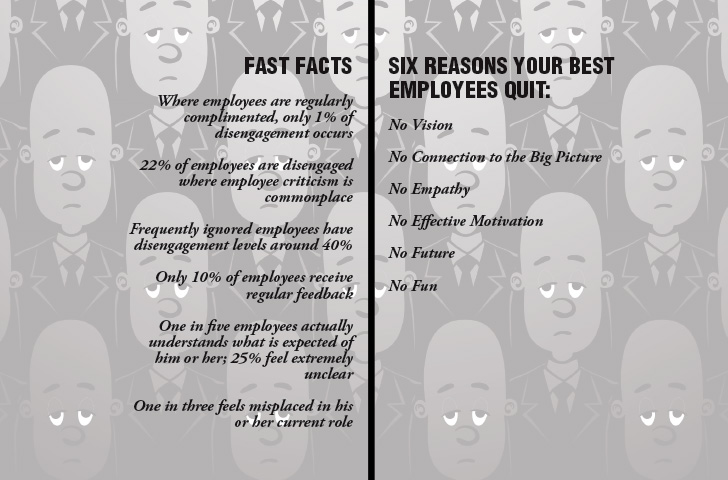The OGM Interactive Edition - Summer 2023 - Read Now!
View Past IssuesVirtually every company can attest to “gaps” in the system occurring in areas of skills, generations, age, culture, compensation, gender, education, knowledge, technology, and more. There is, however, one gap that is too often overlooked and is present in the most basic of human functions—thinking.
Despite such a strong emphasis on employee attraction and retention, the oil and gas industry still portrays a proportional difference between how the employer and employee view the same issues. Why isn’t there more acknowledgment surrounding the differences of their respective needs and expectations? While striving to obtain an office utopia is not realistic, there should, at a minimum, be a greater recognition of this cognitive gap with an accompanying movement to narrow it.

There is a substantial dissonance between what employees want and what the employers think they should actually be doing. These contradicting perspectives are often why employees’ requests go largely denied or ignored; the results of which breed a sense of helplessness and exasperation within the greater workforce. Waiving off employee suggestions leaves the employee to compensate for the broken systems within the organization, whether it is with resources, technology, processes, or procedures. Not only are the employees no longer able to focus on their primary responsibilities, they also feel like they are working 24/7 without their required support. They are finding themselves lacking the proper tools and resources to perform the tasks to their assumed expectations and are no longer able to achieve the targets expected of them by their employers.
Contrastively, to the employer, it is crucial that he or she maximize his or her current resources in order to reach specific business objectives. Employers rely on the team and organization to perform at their constant best. As a result, employees often find themselves overextended and strained within their roles with unheeded needs. The results of this imbalance and lack of cohesion in the workplace are frustration, low employee morale, disengagement, reduced productivity and efficiency, and more often than not, a declining earnings performance.
The employer is principally focused on the bottom line and the overall business strategy for the company. The employee is essentially responsible for the day-to-day operations. Typically, there is a persisting disconnect between the two as they have contrasting perspectives, and varying objectives and scopes. Despite the employer’s capacity to maintain constant awareness of the company’s vision, if a poor and ineffective channel of communication is presented, the employees may begin to feel detached and eventually lose sight of the added value of their contributions, making their work mundane and meaningless. Without transparency from the employer, an absence of trust is quickly cultivated, and the employees end up feeling as if their efforts are unappreciated or misunderstood. The longer this cycle continues, the less likely it will be fixed.
When it becomes evident that employers and employees are not aligning as they react based on their individual perspectives, steps can be taken to find a resolution that satisfies everyone.
1. Ask what can be improved, and then listen.
Take the time to fully comprehend what the primary concerns are. Reflect on the past problems, and resolve that all parties will commit to the solutions moving forward.
2. Identify the gaps and regain employee buy-in.
To unearth the gaps, create smaller focus groups with cross-sections of all departments within the company, since inter-company surveys can sometimes be tricky to use in times of uncertainty and insecurity.
3. Challenge and engage the employee with the goal of finding what works best for both parties, then set attainable targets and timelines to resolve the issues.
Together create a living, breathing, fluid definition of what the term efficiency means to both employers and employees. By starting at the foundation and discussing what the employee views as her perceived value, the exploration can encourage them to rediscover their value added.
4. Discover strengths with employees while creating an actual measure of peak performance.
In order to collectively strive toward the company vision, employers will need to share the overall business strategy, and employees will likely reconnect and become re-engaged.
Once this has happened, be sure to use and understand each individual’s capabilities to his or her fullest, making it easier to work together to achieve business performance targets.
5. Create an effective communication strategy, which will rebuild and then nurture trust between employers and employees, eventually breaking the negative cycle.
Along with facilitating communication, employers can develop programs that are based on what their employees see as important matters, while ensuring retention and allowing their views to gain recognition.
These key programs will require executive acknowledgment and approval, and should be subject to reviews over time to determine whether they can continue or will require revision, thereby guaranteeing sustainable and long-term solutions.
Once both the gaps and the tools to close them have been determined, reconciliation can begin. Employers will be able to recognize the valid needs of employees, and the employees will comprehend the company’s long-term views and objectives.
While this change cannot occur overnight, and the resolutions will likely be met with adversity, it is important to press on to correct the negative recurrences so the company and its valued employees can grow. Companies can revive their workforce, amass candidate attraction and retention, and become role models for the rest of the industry.
How can you as the employee successfully move past these obstacles?
How can you as a manager use this knowledge as a chance to change the culture of “gaps” within your organization?
Did you enjoy this article?